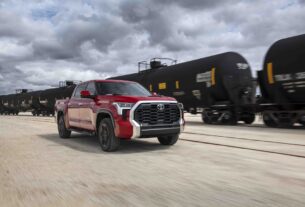It’s no wonder shoppers get hybrids and plug-in hybrids confused. After all, even carmakers can’t seem to get it straight. Example: the Chrysler Pacifica Hybrid minivan is actually a plug-in hybrid. The marketing department simply sidestepped the issue, leaving the technicalities to the sales staff.
Engineers and regulators deserve some blame, because the technical classification for the familiar Toyota Prius is Hybrid Electric Vehicle (HEV), even though it is 100 percent gasoline fueled. Propulsion is split between gasoline and electricity, hence the EV, but the only fuel you’ll put in is gasoline. This disconnect is the tip of the misunderstanding iceberg.
You are watching: Hybrids vs. Plug-In Hybrids: Pros and Cons
If you don’t grasp that, the logical leap to plug-in hybrid is difficult when doubts like “Aren’t all hybrids electric?” trip you up. Formally known as a Plug-in Hybrid Electric Vehicle, a PHEV operates like a hybrid, but its battery is big enough that you can (and should) plug it in regularly. This leads to further confusion because some observers lump PHEVs with full EVs under the umbrella term “plug-in vehicles.” That’s true, but EVs must be plugged in, while PHEVs can lean on their gas engines.
How Hybrids and Plug-In Hybrids are Similar
Both powertrains have Hybrid in their official names, and that indicates they share a core engineering philosophy and operational motif—up to a point. They both use an internal-combustion engine and an electric motor for propulsion, with the electric motor going it alone when accelerating from rest and the gasoline engine joining as speed builds—mechanically, in parallel hybrids; by driving a generator, in series hybrids.
Both are equally dependent on regenerative braking (regen) to convert forward momentum into electricity when the driver wants to slow or arrest a vehicle’s descent on a hill. This harvested energy is saved in a small battery that’s little bigger than 1 kilowatt-hour (kWh), a sufficient size because that saved energy will be immediately reused the next time the driver accelerates. In stop-and-go city driving, opportunities to top up the battery via regen happen constantly, which is why both types have unusually high city MPG.
How Hybrids and Plug-In Hybrids Differ
In a hybrid, that small battery is all there is, and how it’s kept full relates back to the burning of gasoline. In plug-in hybrids, that small battery still exists, but it’s more of a theoretical reserve set aside within a much larger battery. How much larger is a PHEV’s battery? On the order of 10 to 20 times the size of a hybrid’s battery. The extra capacity allows for fully electric driving for some 20 to 50 miles, depending on battery size and the weight and configuration of the vehicle. You do have to plug in the vehicle to fill this larger battery, which is where the P in PHEV comes from. Crucially, the battery isn’t truly empty when range goes to zero and the engine switches on. This is where the approximate 1 kWh reserve carve-out comes into play so gasoline hybrid operation supported by regenerative braking can continue, the H in PHEV.
Because of this, PHEVs stand in a middle ground between gasoline-fueled vehicles (including hybrids) and fully electric vehicles. They have two fuel flaps for two external fuel sources—electricity and gasoline. This is why it’s easier to think of PHEVs as part-time electric vehicles. They can be a pure EV commuter and errand-runner on weekdays, but they retain unlimited road trip capability using gasoline-fueled hybrid power during weekend trips and on vacation.
To paraphrase a superhero franchise, with greater battery power comes greater design responsibility. A PHEV is expected to get propulsion from its electric motor across a wider speed range than a hybrid when its battery is sufficiently juiced up, so the PHEV upgrade is only feasible if the underlying hybrid system has a sufficiently powerful electric propulsion motor. Because such motors also act as generators, this also means PHEVs are more likely than hybrids to offer varying driver-adjustable levels of regenerative braking up to including one-pedal driving via regen triggered by lifting off the throttle.
Plugging In a PHEV
See more : 20 Most Affordable Cars to Buy in America in 2023
It’s easier to deal with plugging in a PHEV than a full EV, mainly because their batteries are significantly smaller—on the order of one-fourth the size. As a result, the 110-volt “Level 1” charge cord that comes in the trunk may well deliver enough juice to top up the battery overnight (10 to 12 hours) using a standard garage outlet—especially if you can plug in every night at home. An electrical upgrade to support 240-volt “Level 2” home charging equipment may not be necessary at all.
You’ll will still benefit from 240V charging away from home (and at home if you upgrade), but the Level 2 speed advantage is typically 3x faster than 110-volt Level 1 instead of 6x, because PHEVs generally have smaller (and less expensive) 3.3-kW onboard charge circuitry instead of the 6.6-kW (and larger) units that pure EVs are typically fitted with.
As for DC fast-charge capability, most PHEVs do not support it—the Mitsubishi Outlander is the only current exception—because their batteries aren’t big enough to warrant the extra cost and complexity. Besides, DC fast charging is intended for pure EVs on road trips, but PHEVs have the gasoline half of the personality for that. You don’t need to hassle with charging as you wander around the country, which is a big part of a PHEV’s appeal. It’s a feature, not a bug.
PHEV Payback
Does a PHEV pay for itself? Like anything else, that depends. On a pure dollars and cents basis, you’ll have to do some math. You’ll need to know the cost difference between a PHEV and standard hybrid version of the same car. You’ll need to estimate the number of electric miles you’ll drive in a day (or the interval between charges) and compare that to the PHEV’s plug-in range. Generally, if the plug-in range is greater than this number, you’re in good shape. You’ll also need to factor in the local cost of electricity and gasoline. Generally speaking, those who’ll drive the majority of their miles on electricity stand the best chance of achieving break-even, particularly if the cost of electricity is locally low or you have solar panels.
Others are motivated by reducing their carbon footprint, and here the arguments are easier to make. It’s just as necessary to drive most of your miles on electricity, but the relative costs of gasoline and electricity are less critical if being green is a bigger motivation than saving green. Other tangible benefits include the smooth and silent EV driving experience you get when driving on electricity alone, and the dramatically reduced brake wear that is a neat byproduct of having regenerative braking do most of the work.
But it’s also clear that if you’ll rarely plug and will drive a high percentage of miles on gasoline, then a PHEV is NOT for you. Look into a regular hybrid if this sounds familiar. A PHEV powertrain you’ll never plug in represents extra cost and added weight because of the bigger battery. A lighter and cheaper standard hybrid is the better way to go in this case, as the reduced weight of a hybrid typically results in better fuel economy than an equivalent PHEV running on gasoline.
Modes of PHEV Operation
There are a couple of additional modes of operation beyond the obvious EV when the battery is charged, gasoline hybrid when it’s depleted.
EV Blend mode mixes electricity and gasoline according to the computer’s whim to maximize efficiency, prioritizing EV drive in town and when cruising steady, then switching to hybrid mode during hard accelerations and sustained high speeds even if the battery charge level is high. This is a driver option in most cases, but it can be the default in some cases, particularly if the PHEV’s electric side is somewhat undersized. This is irksome to some because it doesn’t meet the EV-first expectations many buyers have.
See more : Automakers turn to hybrids in the middle of the EV transition
EV Save mode allows you to preserve a charged battery for later use, which forces the gasoline engine into hybrid mode right away. This is deemed necessary in some European markets where certain city centers (London, most famously) prohibit or highly tax gasoline vehicle operation. You can also think of it as Date mode for those times you want to save the electricity until you get to a friend’s place to show off. Some Jeep 4xe owners use it to save the electricity for the trail, where the high torque and quiet operation of electric propulsion is a big benefit.
Charge mode forces the engine to come on forcefully to charge the battery using excess engine power, but using gasoline to intentionally charge the battery this way is a self-defeating exercise because it’s a less efficient and more costly way of juicing up than plugging in. The main beneficial application has to do with climbing long grades, where adding juice to the battery before you get there can ease the trip up. But even that’s questionable, as there’s nothing wrong with letting the battery run down and have the car automatically switch to hybrid mode.
Specialist PHEV Outliers
Exotic PHEV sports cars like the Ferrari 296GTB don’t offer much range (7 miles), and there doesn’t seem to be much point until you consider two things. In Europe, the WLTP cycle they use results in a larger range (16 miles) that makes the London city center use case somewhat viable. Another big reason has to do with performance. PHEVs like this use their battery energy to add to the engine’s power to generate greater acceleration and more speed. Starting a track session with a pre-charged battery gives you full beans from the start, the best initial lap times, as well as superior 0-60 and quarter-mile times.
The discontinued BMW i3 Rex (range extender) was a plug-in hybrid from a customer point of view, but it was not a PHEV from an engineering or regulatory perspective. Instead, it was a unicorn called a BEVx, a battery electric vehicle with an onboard range extender. PHEVs are hybrids first with an enlarged battery, but a BEVx is an EV first with a small gasoline-fueled generator. The BEVx designation allowed the Rex to fulfill a portion of BMW’s overall EV obligations, but to qualify the Rex’s gasoline performance had to be so limited you’d rarely bother. The i3 Rex was therefore quite slow in range-extender mode, with its generator supported by a mere 38-hp engine fed by a 2.3-gallon tank.
Summing Up
If it were up to us, hybrids would be called, well, Hybrids. Or maybe Very Efficient Gasoline Automobiles (VEGAs) if we had to coin an acronym. Plug-in hybrids would then be Part-Time Electric Vehicles (PTEVs) because that’s basically what they are and how they’re different.
We’re still irked by how some carmakers market these cars. Chrysler is not alone with its Pacifica Hybrid mislabeling, as Subaru and Bentley do the same thing. Toyota uses the term Prime to denote its PHEV models, while Lexus uses Plus. The use of “e” (or the far more subtle “E” in the case of the Mini Countryman SE) as a prefix or suffix is popular in Europe. Volvo is fond of Recharge, while Jeep is forging ahead with 4xe. Point is, the badge or name may not always properly clue you in to the fact that you’re looking at a plug-in hybrid instead of a regular hybrid or even an EV.
What to do? Look for a more complicated fuel-economy label split into gasoline and electricity columns on the window sticker, or simply walk around the car and see if you count two fuel flaps.
Here is every plug-in hybrid currently for sale in the United States, along with its EPA-rated electric-only driving range and combined gasoline hybrid rating (click on the vehicle name to learn more about it)
Sedans
SUVs, Wagons, and Minivans
Luxury Sedan
- 2023 Mercedes-Benz S580e 4matic: 46 miles/23 mpg
- 2024 Volvo S60 T8 AWD Recharge: 41 miles/31 mpg
- 2024 Volvo S90 T8 AWD Recharge extended range: 38 miles/30 mpg
- 2024 BMW 330e Sedan: 22 miles/27 mpg
- 2023 BMW 530e Sedan: 21 miles/26 mpg
- 2024 Bentley Flying Spur Hybrid: 21 miles/19 mpg
- 2024 BMW 330e xDrive Sedan: 20 miles/26 mpg
- 2023 BMW 530e xDrive Sedan: 18 miles/25 mpg
- 2023 Porsche Panamera 4 e-Hybrid: 18 miles/22 mpg
- 2023 Porsche Panamera 4S e-Hybrid: 18 miles/22 mpg
- 2023 Porsche Panamera Turbo S e-Hybrid: 13 miles/19 mpg
Luxury SUV and Wagon
- 2023 Land Rover New Range Rover P440 PHEV: 51 miles/21 mpg
- 2023 Land Rover New Range Rover Sport P440 PHEV: 51 miles/21 mpg
- 2024 Volvo V60 T8 AWD Recharge: 41 miles/31 mpg
- 2024 Lexus NX 450h Plus AWD: 37 miles/36 mpg
- 2024 Volvo XC60 T8 AWD Recharge: 35 miles/28 mpg
- 2024 Alfa Romeo Tonale eAWD: 33 miles/29 mpg
- 2024 Volvo XC90 T8 AWD Recharge: 32 miles/27 mpg
- 2024 BMW XM: 31 miles/14 mpg
- 2023 BMW X5 xDrive 45e: 30 miles/20 mpg
- 2024 Audi Q5 TFSI e Quattro: 28 miles/26 mpg
- 2024 Lincoln Corsair AWD PHEV: 27 miles/33 mpg
- 2023 Bentley Bentayga Hybrid: 23 miles/20 mpg
- 2023 Lincoln Aviator PHEV AWD: 21 miles/23 mpg
- 2023 Porsche Cayenne Turbo S e-hybrid: 14 miles/18 mpg
Exotic
Dan Edmunds was born into the world of automobiles, but not how you might think. His father was a retired racing driver who opened Autoresearch, a race-car-building shop, where Dan cut his teeth as a metal fabricator. Engineering school followed, then SCCA Showroom Stock racing, and that combination landed him suspension development jobs at two different automakers. His writing career began when he was picked up by Edmunds.com (no relation) to build a testing department.
Source: https://us.congthucvatly.com
Category: Electric & Hybird







